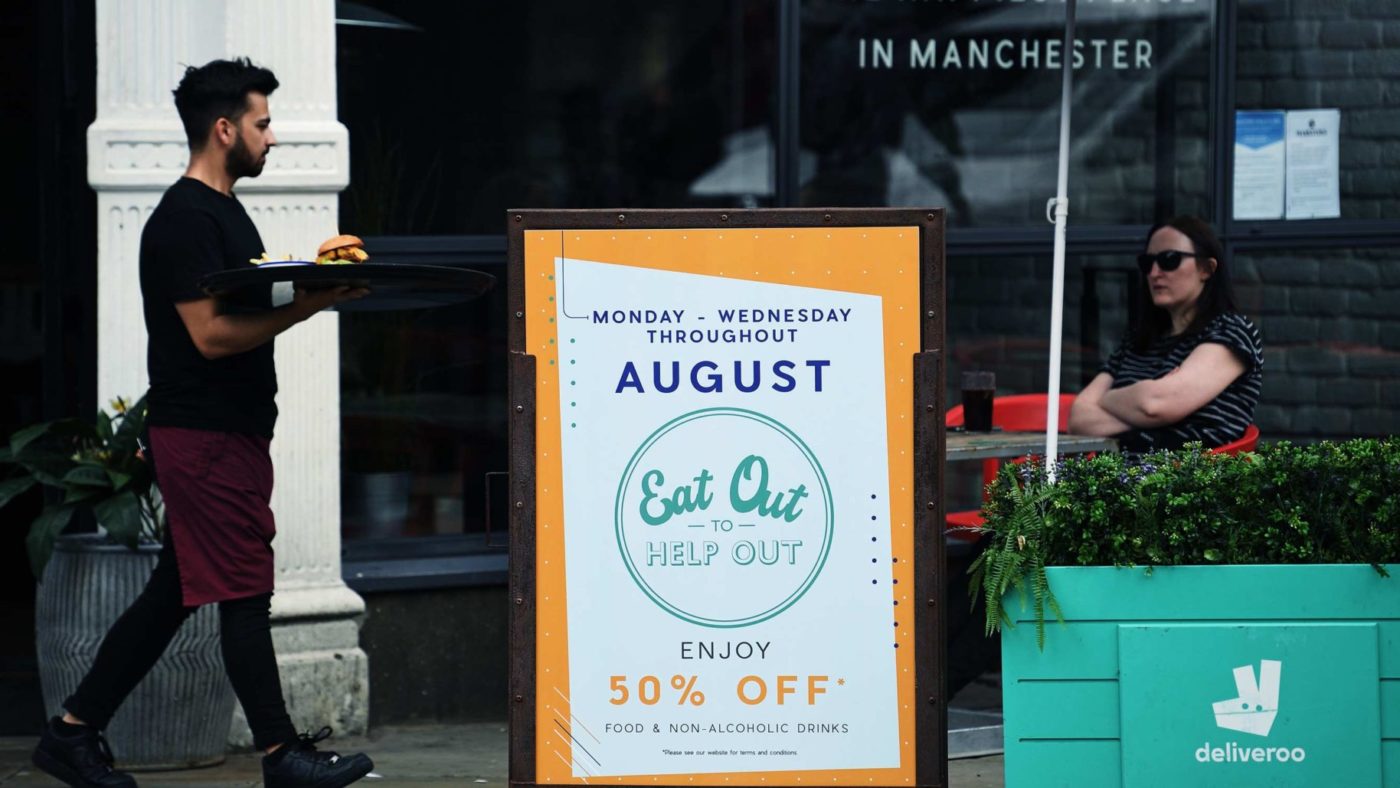Ok, I admit it – when I first heard the Eat Out to Help Out policy, I scoffed. Turns out I was not alone. For in the first 3 weeks of the scheme, 64 million discounted meals have been demolished by the Great British public – and the Covid rate has not rocketed as many predicted. With the subsidy ending next week, it’s time to give credit where it’s due: this unlikely, gimmicky sounding policy has worked. Cutting through the economists’ textbook worries of ‘deadweight costs’ and ‘displaced activity’, Rishi Sunak and his team honed in on two crucial lessons: signals matter, and incentives drive behaviour. From there, everything else flows.
Let’s remember the hospitality sector was on its knees, with about 80% of firms closing their doors in April and 1.4 million workers furloughed – more than any other sector. Government policy was to kill off supply (by closing restaurants), while fear of the virus deadened any latent demand. Having allowed restaurants to re-open, the Government enabled supply to be restored, but the demand side of the see-saw was still slumped on the ground. The EOTHO policy was thus at heart a marketing ploy aimed at restoring confidence. After months of scaring people into staying inside, this policy was about the Government signalling it was ok to leave the house, that the balance of risk had shifted. This was about firing up the animal spirits and giving people the confidence to consume.
The biggest initial worry of course was that the scheme encouraged false confidence. For some, the plan was a reverse Hansel and Gretel, with the Government tempting us out of our houses with a trail of cheap food, only for the Covid crone to get us. But unless the plan was to preserve the economy in aspic until we have a vaccine, any softening of lockdown will bring with it greater risk and a likely rise in infections. The question was, could that rise be kept to an absolute and manageable minimum if the right precautionary measures were put in place? So far, when it comes to the hospitality sector, the answer seems to be yes. The spike in infections many foretold has not materialised. This does not mean we are out of the woods yet – as I have written elsewhere, the greatest period of risk remains Oct-Dec – but for August, when al fresco dining was possible and restaurant windows could be kept open, the gamble to incentivise seems to have paid off.
Which brings us to the costs. Another regularly cited concern was that while this policy may bring people back to restaurants, all it would do was displace activity, shifting covers from the weekend to the Mon-Wed period the deal was valid for. Well, it’s certainly brought people back to restaurants – last Mon-Wed, the number of customers at UK restaurants was 61% higher than the same days last year. But, crucially, the number of customers overall was up 17% on the same week last year. This is a policy that has resonated – and not just with those who would otherwise already be going out. When pizza chain Franco Manca are piggybacking off your branding even as you end the scheme, you know you’ve achieved serious cut-through. Happily, we’re also seeing the signs of a knock on effect, with higher footfall than average on the high streets of many towns and small cities.
But what about the hit to the national bank balance? It does seem mad that the state (read, our children and grandchildren) are paying for us to eat a McDonald’s. But of all the Treasury’s emergency measures, this one might get closest to paying for itself. The current estimate is that EOTHO will cost about £500m from meal claims. To give some context, that’s 0.17% of the cost of the UK’s coronavirus bill. Given the state was already paying the wages of some 1.4m hospitality workers, incentivising people to go to restaurants – and thus for restaurants to unfurlough staff in order to meet demand – is a double win for the Treasury: for each staff member back at work is now off the government’s payroll, and, by facilitating economic activity, they are helping to generate tax revenue. We’ll see when the figures come out, but I suspect it won’t take much to significantly offset or even balance that £500m outlay.
Now this is not to say that Eat Out to Help Out was or is a silver bullet. The Government’s VAT reduction has clearly helped to keep the hospitality industry going, and there may well be problems yet to emerge – for one thing we’re yet to hear of fraudulent claims but given it’s pretty easy to game the system, those stories could still emerge. And while the policy will have helped stem job losses for those businesses on the edge of closing, it won’t hold back the winter’s rising tide of unemployment. But then, it wasn’t meant to. This was a temporary policy for the here and now, a policy of signal as much as substance. This was not, as The Guardian put it, ‘junk served up by a politician who should know better’. Rather it should be food for thought for policy makers, and those early critics – like me – who may now be tempted to eat their words.
Click here to subscribe to our daily briefing – the best pieces from CapX and across the web.
CapX depends on the generosity of its readers. If you value what we do, please consider making a donation.


